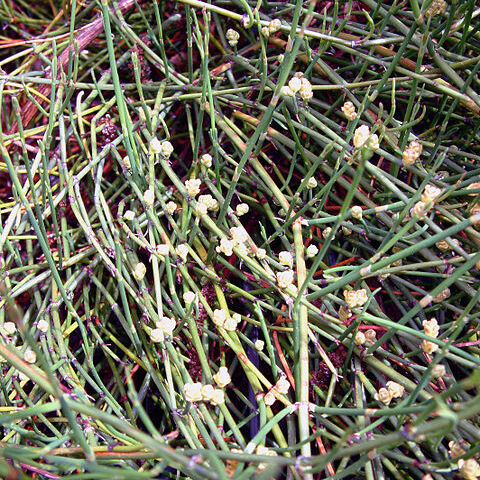Subshrubs small, to 40 cm, sparsely branched; woody stems short or prostrate; branchlets straight or curved, sometimes slightly involute, internodes (2.5-)3-4(-5.5) cm × ca. 2 mm, shallowly furrowed. Leaves opposite, connate for 1/3-2/3 their length, free part subulate to narrowly triangular, to 5 mm, apex sharply pointed. Pollen cones sessile or pedunculate, solitary or in clusters at nodes, rarely terminal; bracts in 4 pairs, margin very narrow, membranous, apex obtuse or subacute; anthers 7 or 8, sessile or shortly stipitate. Seed cones terminal or axillary, solitary, oblong-ovoid or subglobose, ca. 8 × 6-7 mm at maturity; bracts in 4 pairs, connate for 1/2-3/4 their length, red and fleshy at maturity; integument tube 1-2 mm, straight or slightly curved. Seeds usually 2, black-red or grayish brown, concealed by or equaling bracts. Pollination May-Jun, seed maturity Aug-Sep. 2n = 28*.
More
A small shrub. It has many branches. It grows 20-40 cm high. The branches are green. The leaves are opposite and brown. The pollen cones occur singly. The cones are near the ends of short side branches. The ripe cones are red and fleshy. There are 3 seeds that are oval and 3 sided. These are 5-6 mm long.


